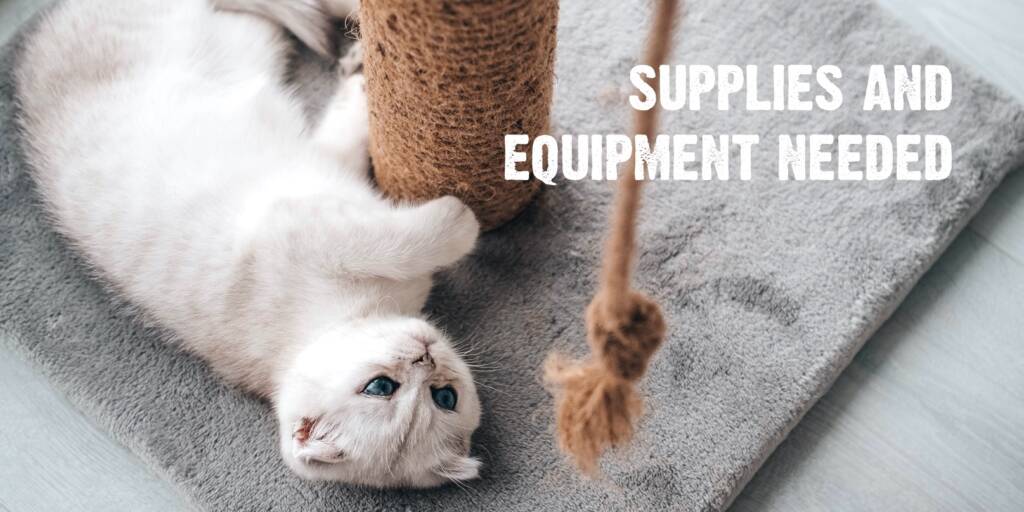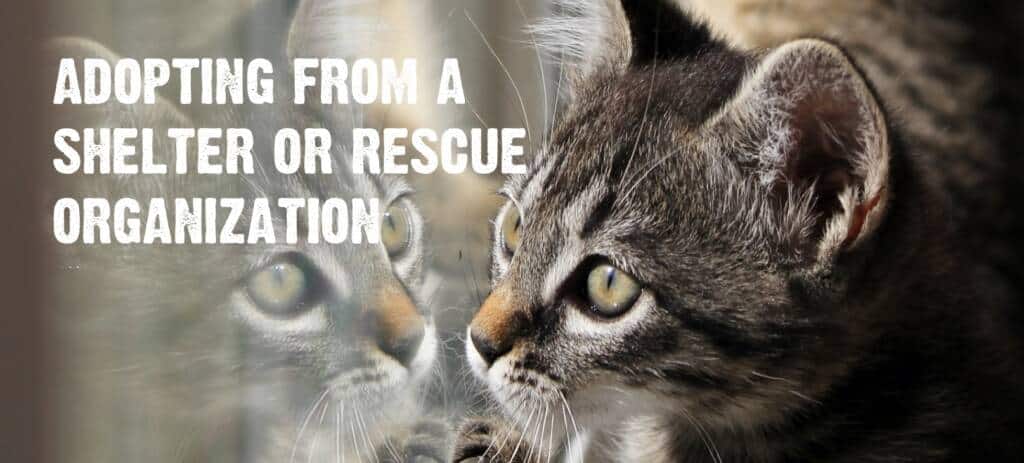Prospective pet parents are increasingly opting for adoption once the decision is made to bring a feline family member into their home.
Adopting a cat can involve many unknowns, so we at RAWZ wanted to shed some light on the process. Keep reading to learn how to adopt a cat, tips to help you prepare and what to expect during this life-changing experience.
Preparing for the Cat Adoption Process
If you’ve been thinking about adopting a cat and have finally decided you’re ready for the commitment, it can feel exciting and nerve-racking all at once.
Here are five steps to prepare you for the adoption process:
1. Plan Ahead
Think about the type of cat you’re looking for to narrow down your search from the get-go. Consider age, size, energy level, coat preferences (to determine grooming needs), and potential training requirements. If you’ve never owned a cat, reach out to feline owners, veterinarians or counselors at a rescue center for guidance on finding the right cat for you.
2. Decide Where You’d Like to Adopt
Create a list of reputable adoption agencies in your area. If you need help getting started, Adopt-a-Pet and PetFinder are great resources for exploring rescues and shelters that source animals ethically and treat them well.
3. Research the Adoption Process
Once you’ve chosen a shelter or rescue organization, start reviewing the adoption process. Every organization has its own set of requirements potential pet owners need to meet, which means what you need to adopt a cat can vary. Questionnaires, home visits and references may be required, so it’s best to understand what the process entails before filling out the application.
4. Be Patient
Finding your feline friend can take time. Make sure everyone in your household is on the same page about the adoption before meeting your future cat. After you’ve discussed expectations, schedule a time for everyone to visit the shelter. And don’t rush to adopt the first cute kitten you see. While it’s good to be open-minded, don’t forget what you’re looking for in a pet. It’s okay to return to the shelter a few times until you find your perfect match.
5. Get Your Home Ready
Buy necessary supplies, like food and litter, and set up a private space in your home if possible. Creating a quiet environment for your cat can help them feel safe and secure during a potentially stressful transition. Toys, scratching posts and tchotchkes can keep them entertained as they get used to their new home.
Key Considerations to Find the Right Cat for Your Home and Lifestyle
While adopting a cat is exciting and fulfilling, it’s also a big decision. Consider the following factors before bringing a pet home.
Lifestyle: What is your day-to-day life like? Do you travel often? Can you care for a cat full-time? These are important questions to ask when adopting a cat to help you determine if a pet is practical.
Age: Just like humans, kittens and adult cats have different needs. Kittens require a lot of attention, exercise and a cat-proof environment. Adult cats usually have more experience interacting with humans and other pets, so they can be easier to handle.
Personality: Don’t rush into a decision. Be patient throughout your search to find a cat whose personality aligns with yours. If you’re looking for an easygoing cat, those with round heads and longer hair are generally less active than short-haired cats with narrow faces.
Finances: Adoption is an economical way to bring a pet into your life; however, there are additional financial considerations to be aware of. Food, healthcare, bedding, toys, treats and other costs will add up throughout a cat's life.
Future plans: Cats live about 20 years on average, so it’s crucial to consider what your life will look like for decades to come. Are you planning to move? Do you want children? Think about how a cat will fit into your future.
Other pets: If you already have a pet living in your home, you want to ensure a smooth introduction and transition for everyone. Consider your pets' personalities and plan their first meeting accordingly. This will create the best chance of seamlessly adding the newest household member.
Supplies and Equipment to Prepare for the Cat Adoption Process
When adding a cat to your family, there are a few things you can do to help them feel at home.
Stock up with the essentials — a litter box, litter, and bowls for food and water. You can also comfort your new cat by filling their environment with stimulating toys, a scratching post and a comfortable bed before his or her arrival.
Grooming activities like teeth brushing and nail trimming may take time, but you’ll want to purchase the necessary supplies beforehand. You can start familiarizing yourself with your feline with some gentle brushing before easing them into their grooming routine.
How Much Does It Cost to Adopt a Cat?
Despite the common misconception that adopting a cat is cost-free, that’s generally not the case. Many shelters and rescue organizations charge a fee, which varies depending on location, to help cover operational costs and prevent animals being returned.
On average, initial fees range from $15-$300, with kittens generally costing more than adult cats. As for senior cats, many rescue organizations waive or offer nominal fees to encourage the adoption of cats who might otherwise struggle to find a home.
When calculating how much it is to adopt a cat, it is important to acknowledge there are secondary costs of ownership. The price of healthcare, bedding and nutrition can vary throughout a cat’s lifetime and are largely dependent on individual felines.
Adopting a Cat from a Shelter or Rescue Organization
Thousands of rescue groups and shelters in North America take in stray cats and felines from families who can no longer care for them. Therefore, one of the safest and most practical ways to find a cat in need of a forever home is through a shelter or rescue organization.
There are many benefits of working with a shelter or well-known rescue organization like the American Society for the Prevention of Cruelty to Animals (ASPCA), which offers support throughout the process.
If you’re ready to find a shelter or rescue site near you, Petfinder offers a list of over 11,000 rescue groups and shelters across the country. You can also look for adoption centers in your community. Local organizations like Madison Cat Project are a great place to find a cat looking for their forever home.
Spaying or Neutering Your Cat
Adopting a cat from a shelter or rescue organization offers many advantages, including the cost of spaying and neutering as part of the adoption fee. Unless you plan to breed your cat in the future, spaying or neutering is a good idea for many reasons. Perhaps most importantly, the procedure helps prevent overpopulation.
While minor complications are possible, the risk of not spaying or neutering your cat can outweigh going through with the procedure. Non-spayed female cats are at risk of mammary cancer and other health issues. In males, neutering reduces aggression, the tendency to roam and the habit of marking territorial boundaries with urine.
The costs of spaying or neutering will vary by geographic location and provider but generally run between $100 and $300. However, most ASPCA branches, government-funded and non-governmental organizations offer discounted programs.
Feeding & Nutrition Considerations
Your cat will need a nutritionally complete diet that suits his or her current life stage. Age, health status, allergies and dietary preferences will all help you determine the best food for your kitten or cat.
If you notice your cat exhibiting immune system reactions or sensitivity to certain foods, continue searching for a product they're happy with. Some felines prefer wet food, while others prefer dry, raw or minimally processed options.
Cats thrive on a protein-based diet, so whatever you choose, avoid giving them filler carbohydrates and beware of over-processed options that can negatively affect feline development. If you want to provide your feline with healthy, tasty and nutritious food that promotes their health and overall well-being, check out RAWZ all-natural, 100% render-free cat food. And don't forget to ensure they have access to clean water throughout the day.
Helping Your New Cat Adjust to Their New Home
If you have your heart set on adopting a new feline family member and want to create a seamless transition into your home, here are some cat adoption tips to keep in mind.
Create a Safe Space
While it may be tempting to give your cat immediate access to your entire home, this can overwhelm them. Designating a special area for your adopted cat will help them feel more secure until they’re used to their new environment. Your cat may want alone time or need to warm up to their new surroundings or housemates, so stay patient until they feel secure. And don’t forget the litter box! Believe it or not, when a clean litter box is accessible, cats will train themselves to use it.
Introduce Change Gradually
Change can be stressful for cats. Offer comfort by bringing a toy or blanket from the shelter or continuing their existing diet. Familiar objects, routines and even the same type of litter can make for an easier start. Modifications can be introduced gradually. If you want to change your cat's diet, RAWZ recommends a 5–7-day transition period to prevent upset stomachs or discomfort.
Get to Know Your Cat
Set aside time to bond with your cat until they feel safe. If they’re comfortable, pet, touch, and hold them until interactions feel natural. Pay close attention to their reactions and respect their boundaries as you adjust to each other. Once you’re familiar with your new feline, you can slowly start introducing them to your other pets, friends and visitors to your home.
FAQ
How long does it take to adopt a cat?
The adoption process can range from a few hours to a few days. Many shelters, rescues and organizations have different requirements (home visits, reference checks, etc.) to protect cats and their future owners. So, the time it takes from filling out an application to bringing your cat home will vary depending on where you adopt from.
How old should a kitten be to adopt?
Kittens can be adopted as soon as they’re eight weeks old, but there are benefits to waiting 12 or 14 weeks. When kittens can spend more time with their mother or siblings, they develop better socialization habits to prepare them for being an adult. A little patience can go a long way!
Now that you know what to look for when adopting a cat, how to prepare your home and useful adopting cat tips, you should be ready to start the process.
As you gather the necessary supplies, remember a cat’s diet is one of the most powerful ways to promote their health and longevity. Providing minimally processed natural cat food like RAWZ will help ensure your cat has the proper nutrition and hydration to thrive in your new home.















